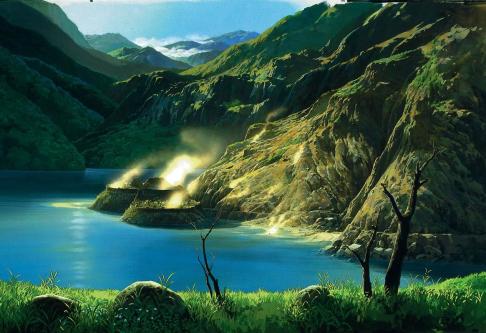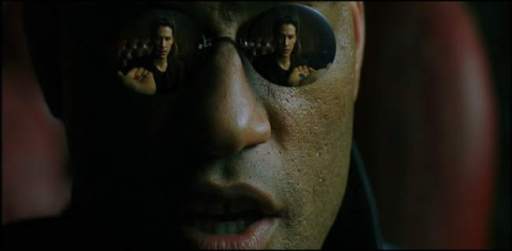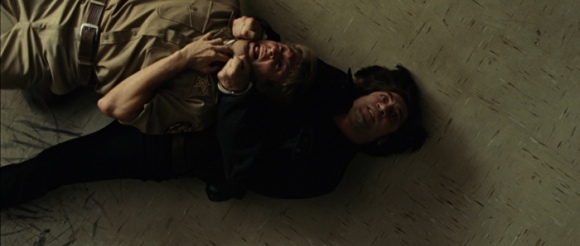Snow White and the Huntsman reminded me of how easily attempts at mythic movie-making can fail. “Mythic” films tell archetypal stories which tend to have a fable-like quality suggesting that the particulars of their plot have universal resonances. Some of the most beloved and profitable films fit this category: here I offer my thoughts on which ones I think are the best.
10) Avatar
Yes, it’s campy, but at heart James Cameron’s techno-epic is a warrior’s tale–not primarily of a grunt going native, but of a crippled fighter thrown into a whole new world who makes war for conscience’s sake. The audience, like Jake Sully, is drawn into Pandora spectator-style, meant to identify with his embrace of identity apart from either faction, to be drawn into the emotional rush of fighting for a worthy cause. The fact that Jake commands his alien army by tapping into their mythic memory, infusing them with hope via the taming of a great beast, drives home the point further.
9) King Kong
This story of a strong native imported to American shores where it breaks free of domination only to be subdued again plays out like a postcolonial tragedy of Western hegemony. The white explorers are hopelessly weak in Kong’s jungle (they would never have captured him without exploiting his weakness for Ann Darrow); Kong is fearsomely dangerous in New York but ultimately manageable, thanks to technological violence (gun-mounted airplanes). The film’s power comes from the unsettling conflict between man and beast, civilization and nature.
8) Hellboy II: The Golden Army
Civilization and nature provide ripe fodder for Guillermo del Toro’s refined sequel to Hellboy, where the hero’s struggle to keep the paranormal peace is contrasted with contemporary society’s casual contempt for the natural and spiritual. The film paints a vivid picture of a mythic world existing just underneath the surface of our own, a surface from under which even the gods rise to challenge our modernistic attempts to control and consume our environment.
7) Princess Mononoke

You can just barely make out that the sloping embankments surrounding the town are freckled with jutting, sharpened tree trunks as a bastion against the outside.
Del Toro’s aforementioned film so closely hews to this film’s themes (right down to the foliage-spawning forest god) that it seems unthinkable that it did not serve as direct inspiration. The setting, however, is at the birth of modernity, where industrial towns are freshly hewn from nature and must fight the gods tooth and nail in order to stand their ground. Beloved (especially by me) writer-director Hayao Miyazaki curiously paints his combatants in shades of gray (though not fifty, thank God) while lionizing the brave but cursed Ashitaka for his attempts to bring peace between man and nature.
6) The Matrix
The first action film to show us a truly malleable reality gloriously enfleshed its technological advancement within a script which skirted the edges of real and unreal, teasing us with hints of an otherness unknown to ordinary life. We’re right there with Mr. Anderson on his journey through the rabbit hole, desirous to know what mysteries lay beyond the purview of workaday existence. It’s probably the one of the best films about liminality, and more time spent before reaching the bullet-ridden climax could have proved interesting. Ironically, ignorance of the things which were to come in sequels proved to be the real bliss.
5) Harry Potter and the Deathly Hallows
I really do mean to treat this film/book separately from the rest of the series, as it was in Rowling’s conclusion that all the themes of the series really came through most clearly and sharply. She has given us a great saga about death and redemption, the filmmakers great mythical moments like the animated “Tale of the Three Brothers”. Love saves the day in Harry Potter, the whole series adding up to a religiously fervent rebuke to death itself.
4) No Country for Old Men
And this would be Harry Potter’s cynical counterpart. The simple tale of greed and violence is framed by the old fashioned musings of Tommy Lee Jones’s aging sheriff, who finds himself wanting in the face of true evil. Brilliantly adapted from the novel by the agnostically prankish Coen brothers, we’re presented with a laconic world of blood and men behaving like animals, left wondering whether or not anything can ever be done about it.
3) The Lord of the Rings
To give a just treatment of these three films would take more time and energy than I’m willing to give. Tolkien’s tale at heart depicts a dire conflict between evil and those who resist it. It’s length derives from his focus on the unexpected journeys in which resistors will almost always find themselves embroiled. And it’s about as well done as can be conceived. Peter Jackson used the source material as an opportunity to showcase further developments in effects technology, while mixing in all kinds of old-fashioned techniques for lovingly layered and always awesome visuals. He gave us the first taste of impossibly vast digital armies going to arms for our entertainment, a once-impressive feat which has now become unfortunately rote.
2) Pan’s Labyrinth
Del Toro’s magnum opus (so far) is not so much concerned with man and nature as it is with death and hope. A young girl copes with the cruelty of her Franco-philic stepfather via a gnarled faun who tests her fitness for the mythical world. Neither the “natural” nor “supernatural” world promise safety to the threatened girl, but her journey offers the hope of a world not bound by the cruelty and hate of postwar Spain circa 1944.
1) Star Wars
As with Harry Potter, I again mean to treat one film separate from its counterparts, although this time the first one instead of the last. George Lucas the myth-remixer is on full display here, doling out information with restraint rather than flinging the whole story at the screen all at once, letting the lonely isolation of Tatooine set in such that the audience is hungry like Luke for something more. The film’s opening shot is a powerfully condensed picture of human history: the strong preying on the weak. From then on every action and moment is a response to that problem, the Force giving hope that something beyond us will equip us in the struggle against bondage, oppression and cruelty.







